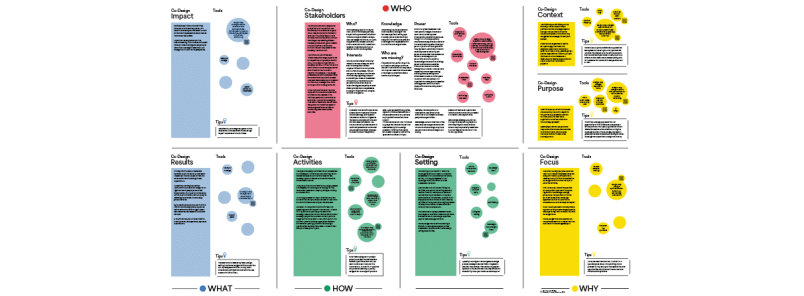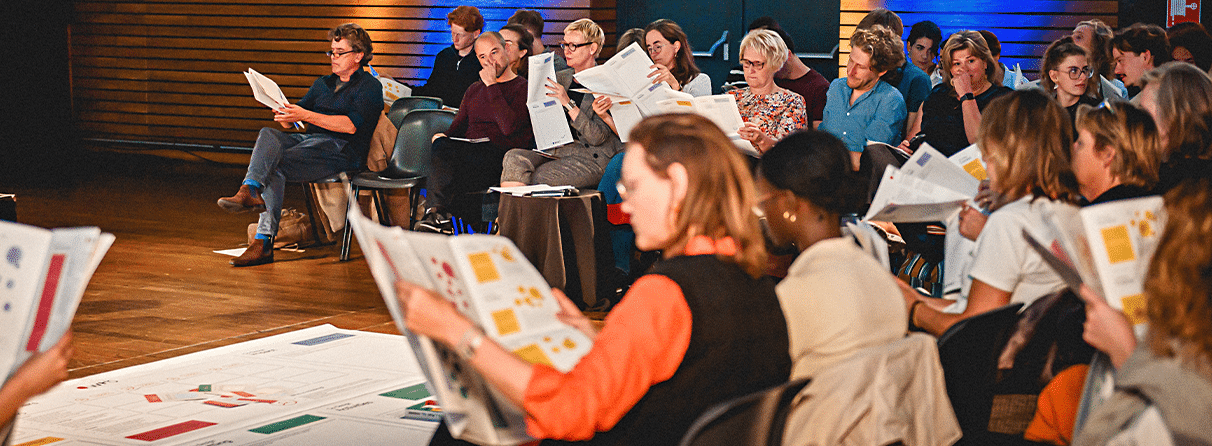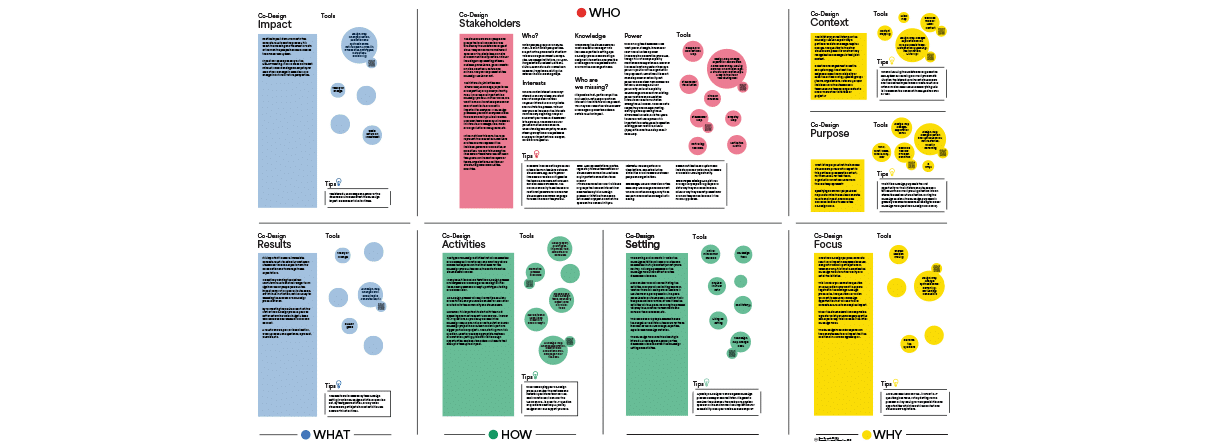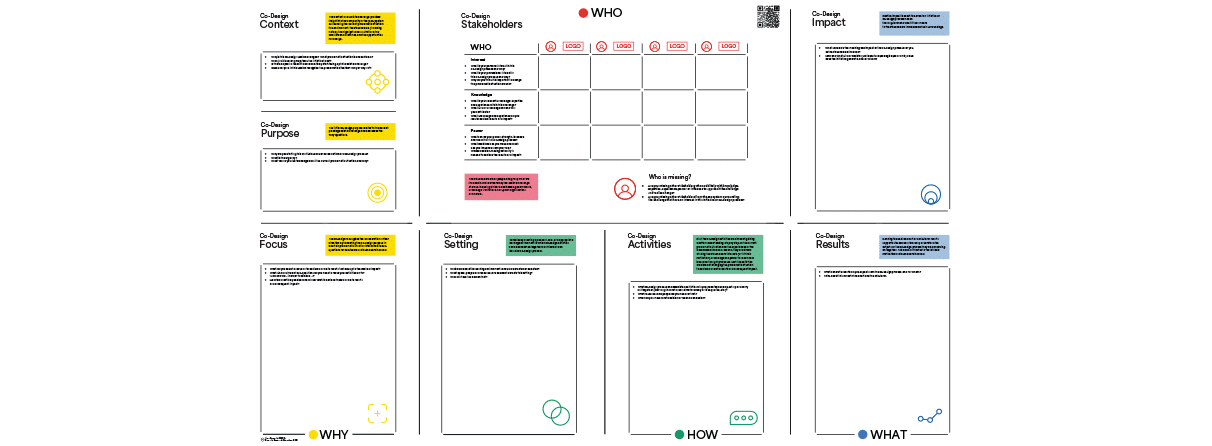Systemic and grand challenges are urgent and affect everyone, including politicians, citizens, government officials, business professionals, NGOs, designers and researchers. Understanding and addressing these challenges is difficult because no single stakeholder or organisation is solely responsible. Everything is interconnected and constantly changing, resulting in challenges being neglected and stakeholders being unable or unwilling to make important decisions.
The Co-Design Canvas is a practical and user-friendly tool that supports flexible planning, conducting, and evaluating of co-design processes for multi-stakeholder coalitions and facilitators. It encourages coalitions to discuss and consider eight co-design variables. The accompanying manual helps people find common ground and align their perspectives.
- Discover how to facilitate open and transparent dialogue.
- A useful tool for initiating, planning, conducting and assessing collaborations.
- Learn about inclusivity and effective collaboration in addressing societal challenges.
How does this tool contribute to Systemis Co-Design?
The Co-Design Canvas tool contains systemic elements. For instance, it suggests stakeholders to discuss each stakeholders’ interest, knowledge and power on individual and collective level, but also who’s is missing and what is the joint interest and common purpose in their collaboration for change.
How to use the Co-Design Canvas?
When using the Co-Design Canvas as a facilitator or initiative taker, it is important to realise that the Canvas is primarily a means to determine the focus of the following co-design process (setting and activities) to achieve the desired concrete results and impact. Completing the Canvas is not a goal in itself.
The Co-Design Canvas specifically identifies eight variables that influence a co-design process: the co-design Context, Purpose, Stakeholders, Results, Impact, Focus, Setting, and Activities. These variables do not only affect the process as a whole, but are also interrelated. The co-design stakeholders influence the co-design focus, which, in turn, determines who should participate in the process. The stakeholders then also determine which concrete results and impact are desired and feasible.



